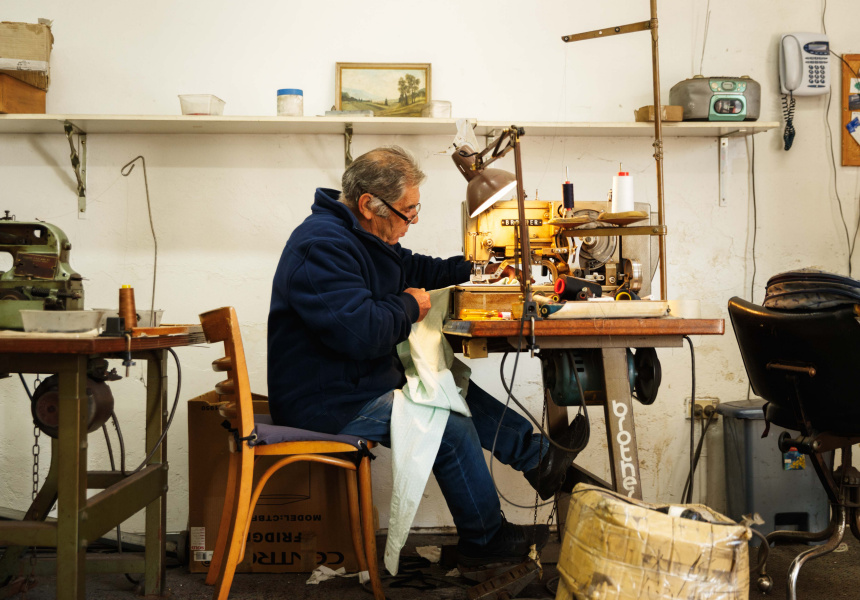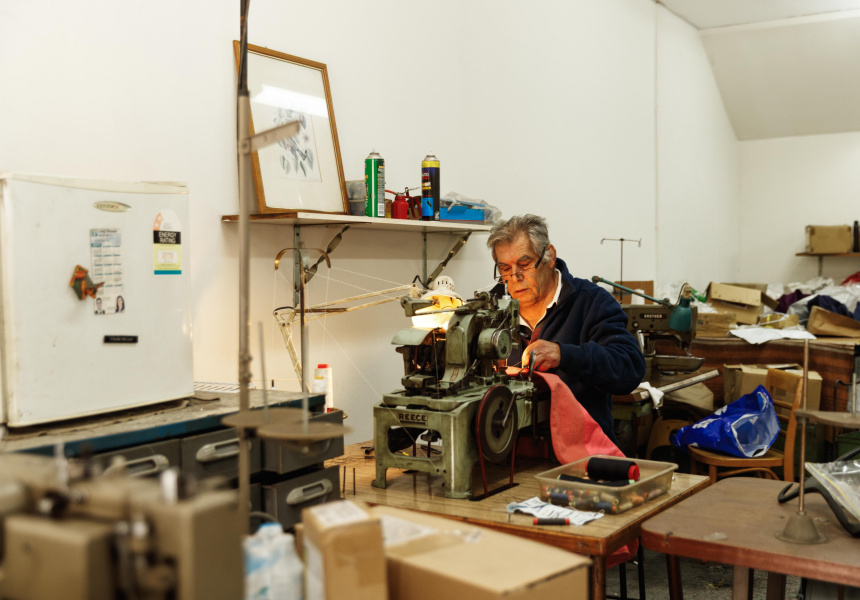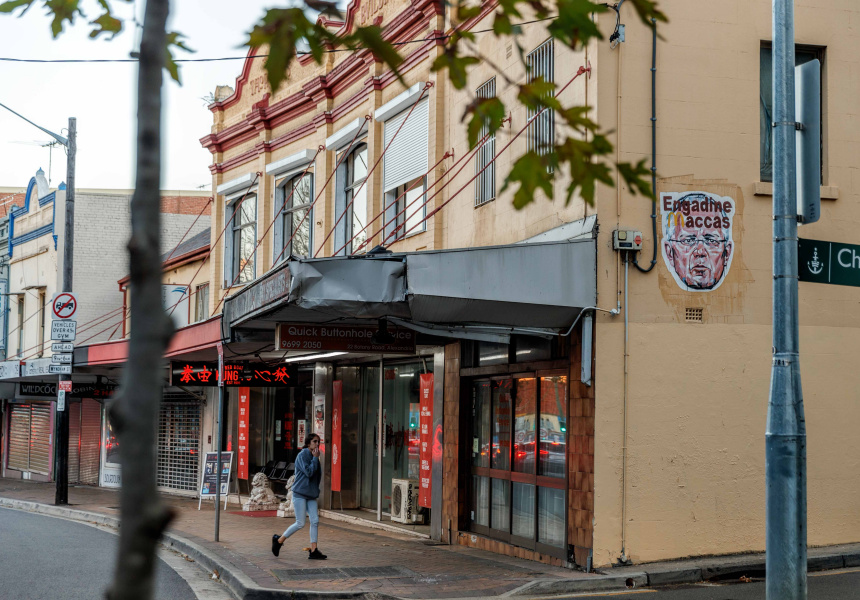“Quick Buttonhole Service” reads the orange sign hanging in front of a cluttered shop on Botany Road. Its sliding glass door is open, letting in the noise from passing trucks.
Inside, 69-year-old Mick Salih sits in front of an antique, but robust-looking industrial Brother machine. He’s carefully stitching a row of precisely spaced keyhole buttonholes on a suit jacket. A tailor, whose garment Salih is working on, stands at his shoulder, quietly observing.
Amid the staccato hammering of the needle piercing the fabric, bits of thread, a screwdriver and a pile of washers vibrate across the table. The machine guides the fabric around the keyhole shape, creating short, tightly spaced stitches.
We think you might like Access. For $12 a month, join our membership program to stay in the know.
SIGN UPWith his rectangular glasses perched low on his nose, Salih stands and takes the garment over to a bar tack, a machine whose sole purpose is to sew a series of reinforcing stitches that close the bottom of the keyhole. In a few minutes, the jacket is finished with three perfect buttonholes.
Salih takes a pair of snips, cleans up the loose threads and brushes off the front of the jacket before handing it back to his customer. They chat for a few minutes, then the tailor fishes out a $10 note and they shake hands goodbye.
In the early ’70s, when Salih took over the shop (back then it was based in Surry Hills), this scene would have been a familiar sight. “In those days there were plenty of places like this,” he says, a wide smile breaking over his face. “Most of the garment manufacturers were in Surry Hills. Kippax Street was full of the rag trade. I was so busy I had five girls working.”
It seems a simple thing, a buttonhole. We do up our shirts in the morning, close our coats to guard against a chilly wind. We take buttonholes for granted. But anyone who makes clothes knows that a professional buttonhole can only be achieved on a specialised machine. Before changes to trade liberalisation drove the Australian garment industry overseas, crafts-people such as buttonholers, pleaters and fusers (who join fabrics via heat and pressure) were an essential part of the rag trade.
“Only the biggest factories with the highest volume of work would have their own industrial buttonholers,” says Tracey Sernack-Quee Chee, a UTS doctoral candidate specialising in fashion and textiles. Sernack-Quee Chee’s family has been in the rag trade in Sydney for generations. “My father’s bread and butter was coats and suits, so a buttonhole service like Mick’s was essential.”
There’s no one like Salih in Sydney anymore. His eight industrial machines are operated and serviced by him alone. The workshop is piled with boxes of dresses and private school polos. A rolling rack holds waitstaff jackets for a Chinese restaurant. “Whoever comes in with a job, I do it. That’s the only way to survive,” he says.
I ask if he works with any well-known designers. As if on cue, the phone rings. It’s someone from Alex Perry asking for keyhole buttonholes on a sample. He also does work for Zimmermann, Bec and Bridge, and Manning Cartell.
“In 16 years, I’ve never worked with anyone but Mick,” says Christina Kelly, owner of Made590, a 100 per cent Australian-made brand. “He’s a legend in the industry. His work is perfect, and he’s even helped me with design issues before.”
Mick also works with design students and the growing community of home sewers.
“Mick used to be in Mary Street down the road from where my mum had a shop,” says Colette Guanta, owner of Tessuti Fabrics. “He did the buttonholes for the garments she made. He’s such a lovely guy.”
As the rag trade moved overseas, Guanta turned her mother’s faltering fashion business into a premium fabric supplier. Her mum, Silva, now designs the shop’s sewing patterns. “I send my customers to him because if you’ve made a beautiful coat, a buttonhole from a domestic machine will spoil it,” Guanta says.
His customers are aware of the fact that retirement is overdue. “The industry would love it if Mick stayed on,” says Karen Kwok, designer and patternmaking teacher. “All my students go to him. I don’t know what we’d do if he wasn’t there. I’d probably make garments without buttonholes,” she says.
No one can say what will happen when Salih’s industrial machines stop whirring and Quick Buttonhole Services joins the other bygone garment industry services. Kelly says business for the fusing service she uses is slowing down, and the city’s last pleater, Mark Rado of Rado Pleating, is approaching retirement.
But for now, no one needs to worry about Salih retiring. “Look, I haven’t thought about it yet. As long as my health is alright, I’ll keep working,” he says. “I like working. I’ve had customers with me for over 30 years, you know. Sometimes I go six months without seeing them, but when they turn up in the shop, it’s like seeing family.”
Quick Buttonhole Services
22 Botany Road, Alexandria
(02) 9699 2050
Hours
Mon to Fri 8.30am–4.30pm



